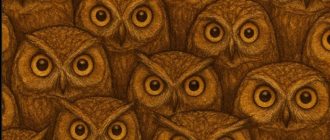“They looked up—and froze.” A strange, dark shape was gliding through the sky near the Chiapas border, leaving locals stunned and sparking a wave of wild theories online. See the viral photo and decide for yourself in the article 👇
One of the most captivating birds native to Mexico and Central America is the quetzal, admired not just for its stunning appearance but also for its deep connection to ancient mythology. This bird has long been a symbol of power and divinity, often linked to Kukulkan, a revered god in Mesoamerican culture.
To the Maya people, the quetzal was sacred and known as Q’uk’umatz, which translates to “feathered serpent.” Ancient carvings and paintings often depicted the bird mid-flight—just like the remarkable images that recently surfaced online, showing a quetzal gliding across the sky near the Corozal border in Chiapas. These photos quickly went viral, drawing admiration from viewers around the globe.
A Strange Shadow or a Sacred Bird?
On April 12, residents of Frontera Corozal looked up to see a dark, graceful figure soaring through the sky. To some, the shape was eerily familiar—like something out of the Harry Potter universe, resembling a ghostly Dementor. But what they were witnessing was a perfectly timed shot of a quetzal in flight, captured by a sharp-eyed local.
The unusual angle and lighting sparked a mix of awe and amusement, with social media users joking that magic had entered the real world. Others were more moved, reminding everyone of how rare and endangered this magnificent bird is. Coincidentally, just a month earlier, another quetzal had been relocated from Mexico City to a zoo in Chiapas to ensure its survival.
The quetzal thrives in lush, humid forests and feeds on small fruits, insects, frogs, and even lizards. Although monogamous and gentle, this bird faces threats from predators like hawks, owls, squirrels, and toucanets. But its biggest enemy is still mankind. Many people illegally trap these birds for their bright feathers or to keep as pets—though tragically, quetzals cannot live in cages. They refuse to eat and eventually die in captivity.

Luckily, some quetzals rescued from such fates have been reintroduced into their natural habitats. With deep, expressive eyes, a soft green crest, and a petite yellow beak, the quetzal is already striking. But male quetzals are especially dazzling, with shimmering feathers in red, green, gold, and blue, and long, elegant tail feathers that can reach up to a meter in length.
Female quetzals are more modest in color, mostly green and gray, and lack the dramatic tail feathers of the males. Still, seeing either one flying freely through the trees is a sight few ever forget. Sadly, the dense cloud forests where they live are disappearing, putting their future at serious risk.
For ancient civilizations across Mesoamerica, the quetzal was more than just a bird—it was a sacred symbol. Though rare today, a few of these creatures still glide through the skies in the wild. According to researcher Mauricio Ruíz Velasco from UNAM, the Mexica people associated the bird with the god Quetzalcóatl, while the Maya linked it to Kukulkán.
These gods represented sunlight, sky, and liberation—fitting for a bird that cannot live in cages. The fact that quetzals die in captivity only deepens their symbolic meaning: they are true emblems of freedom. Watching one soar through the misty jungle is like seeing a living spirit of the sky.







